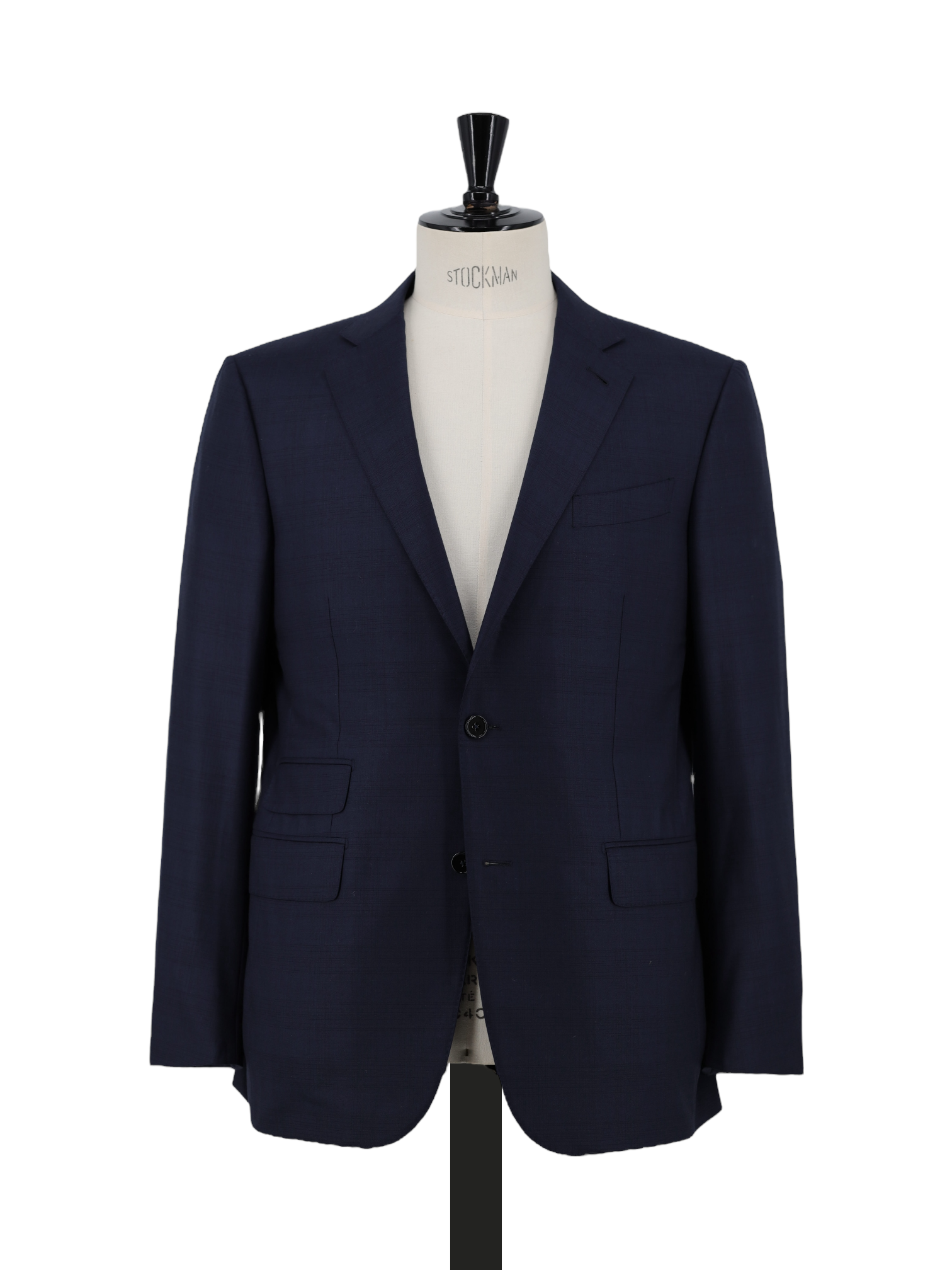
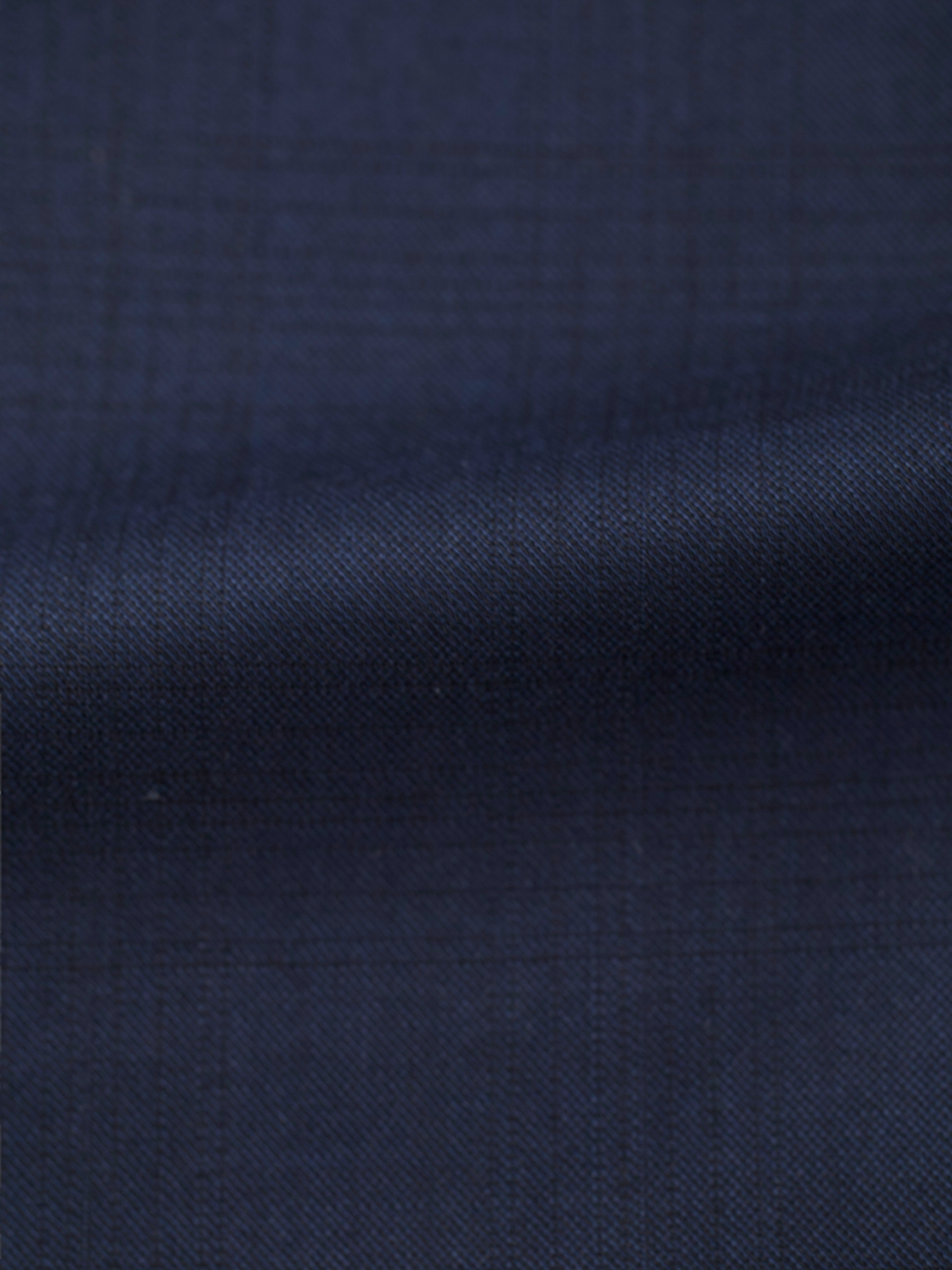
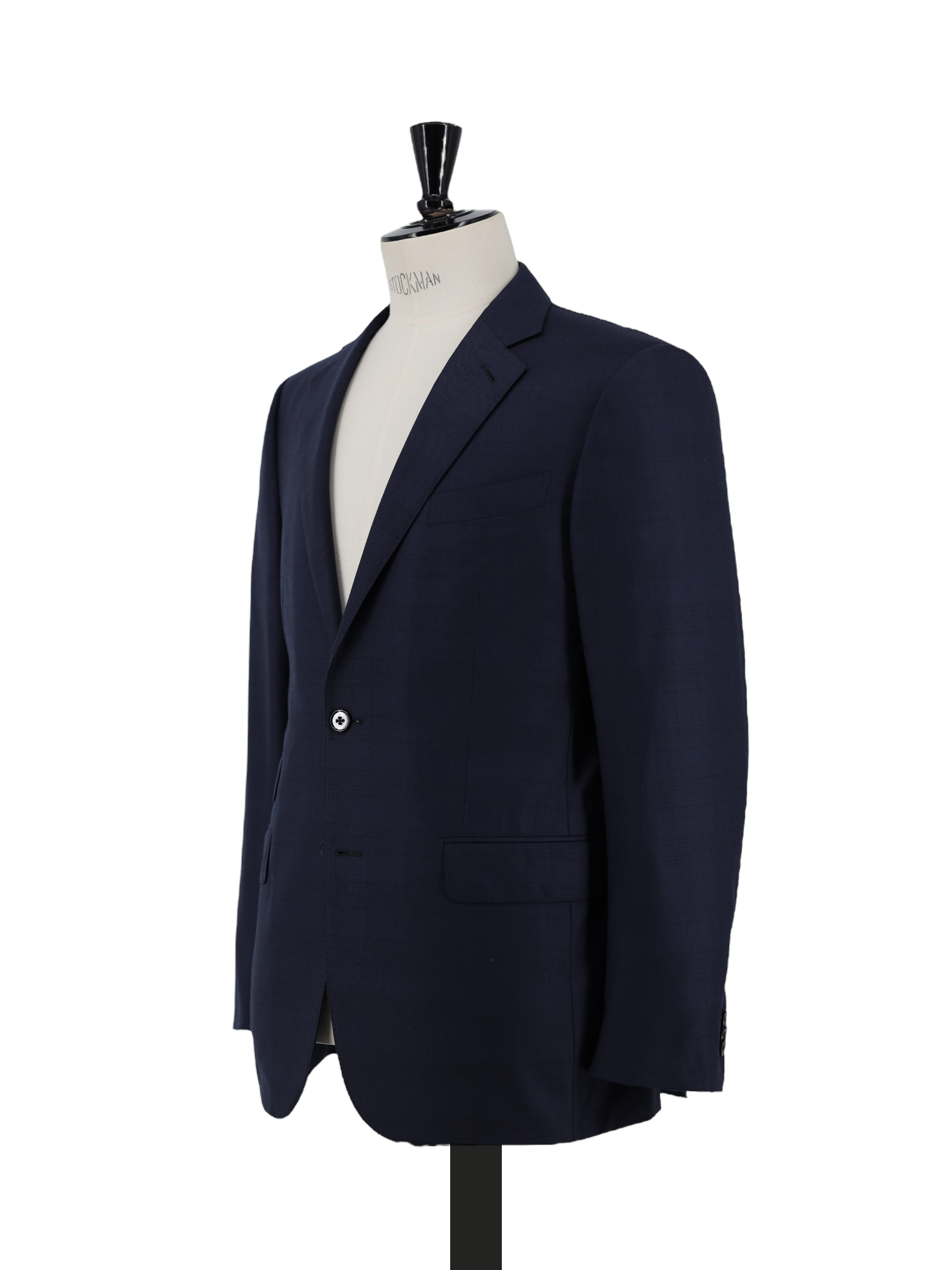
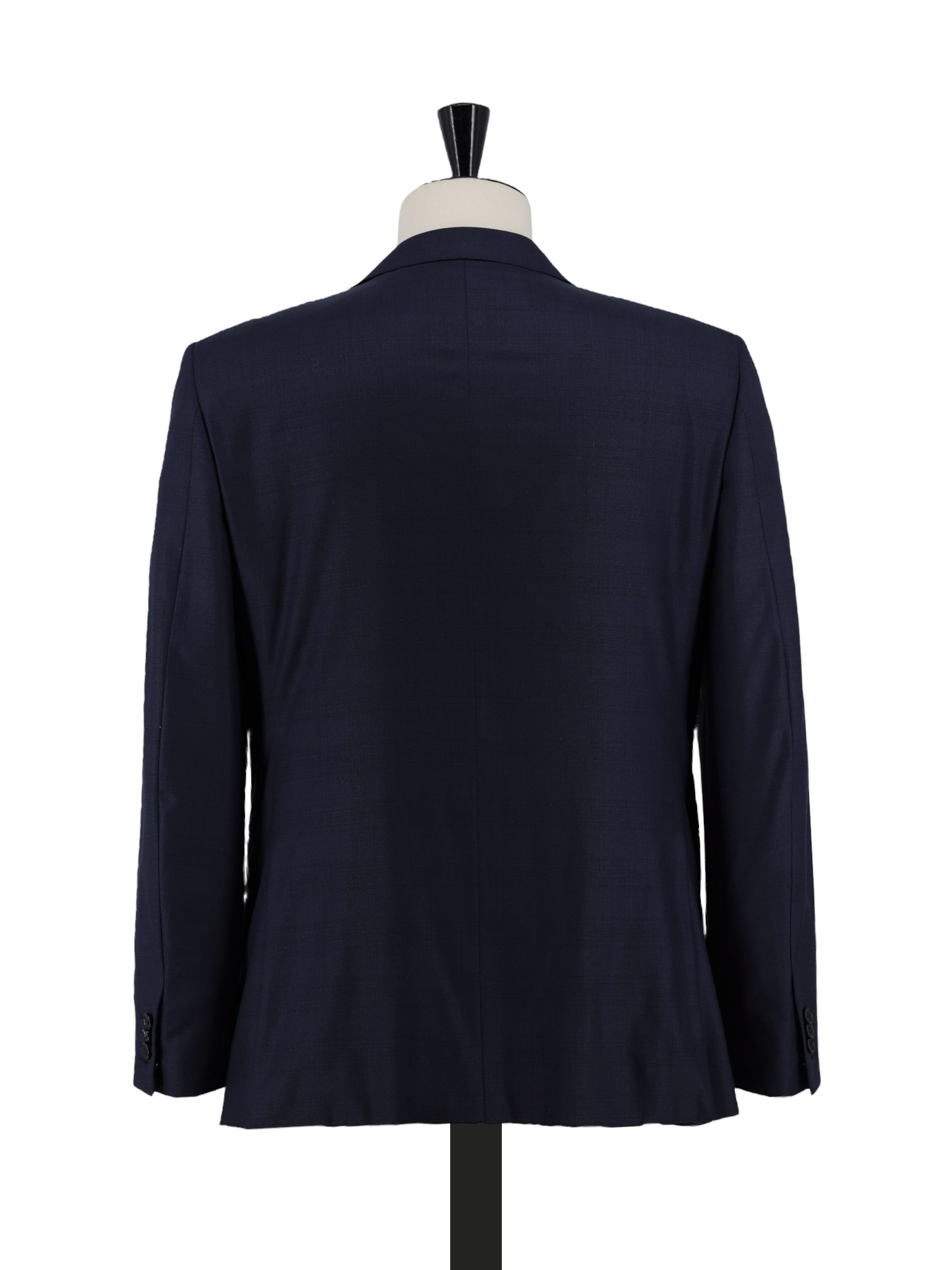
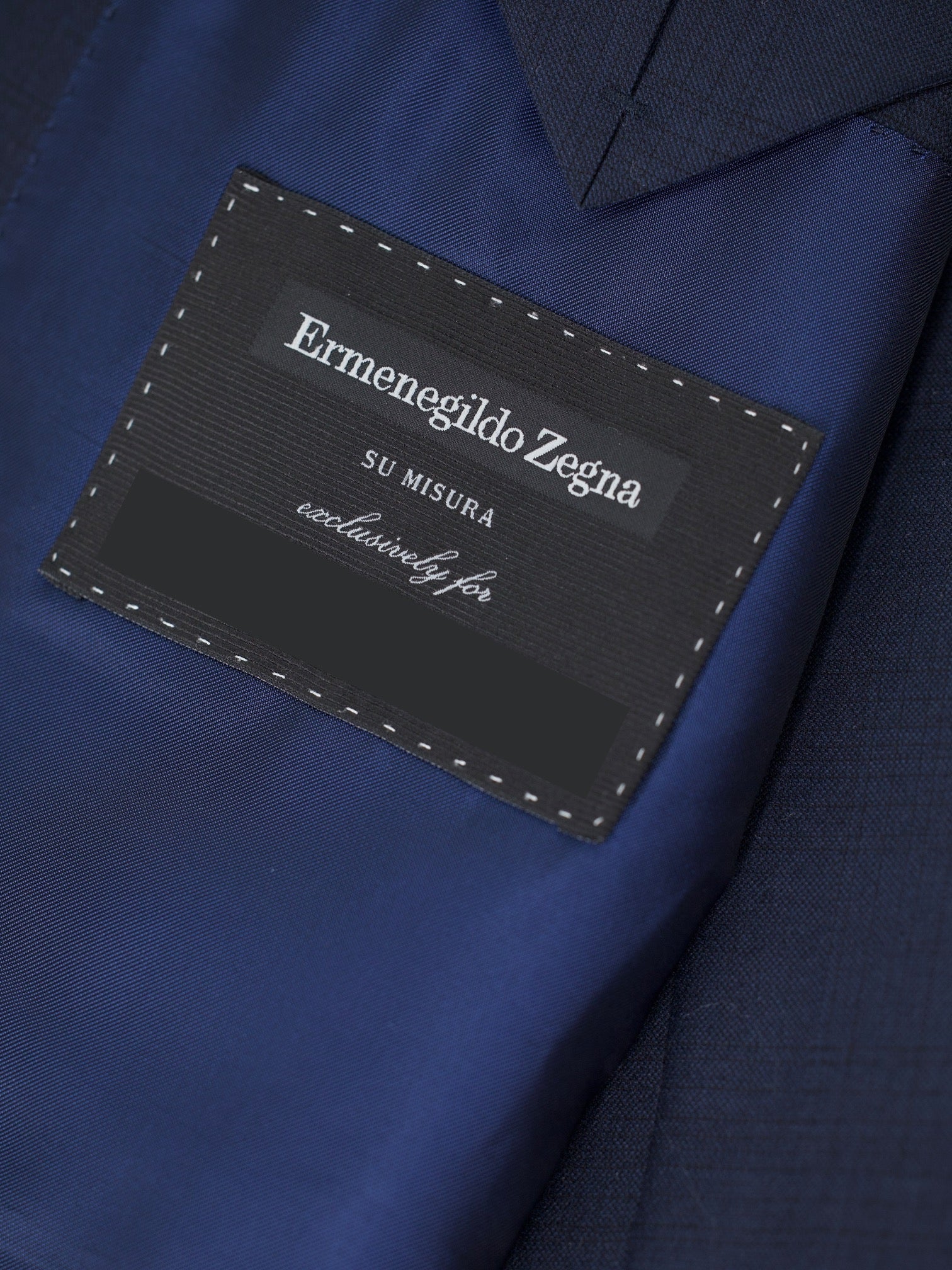
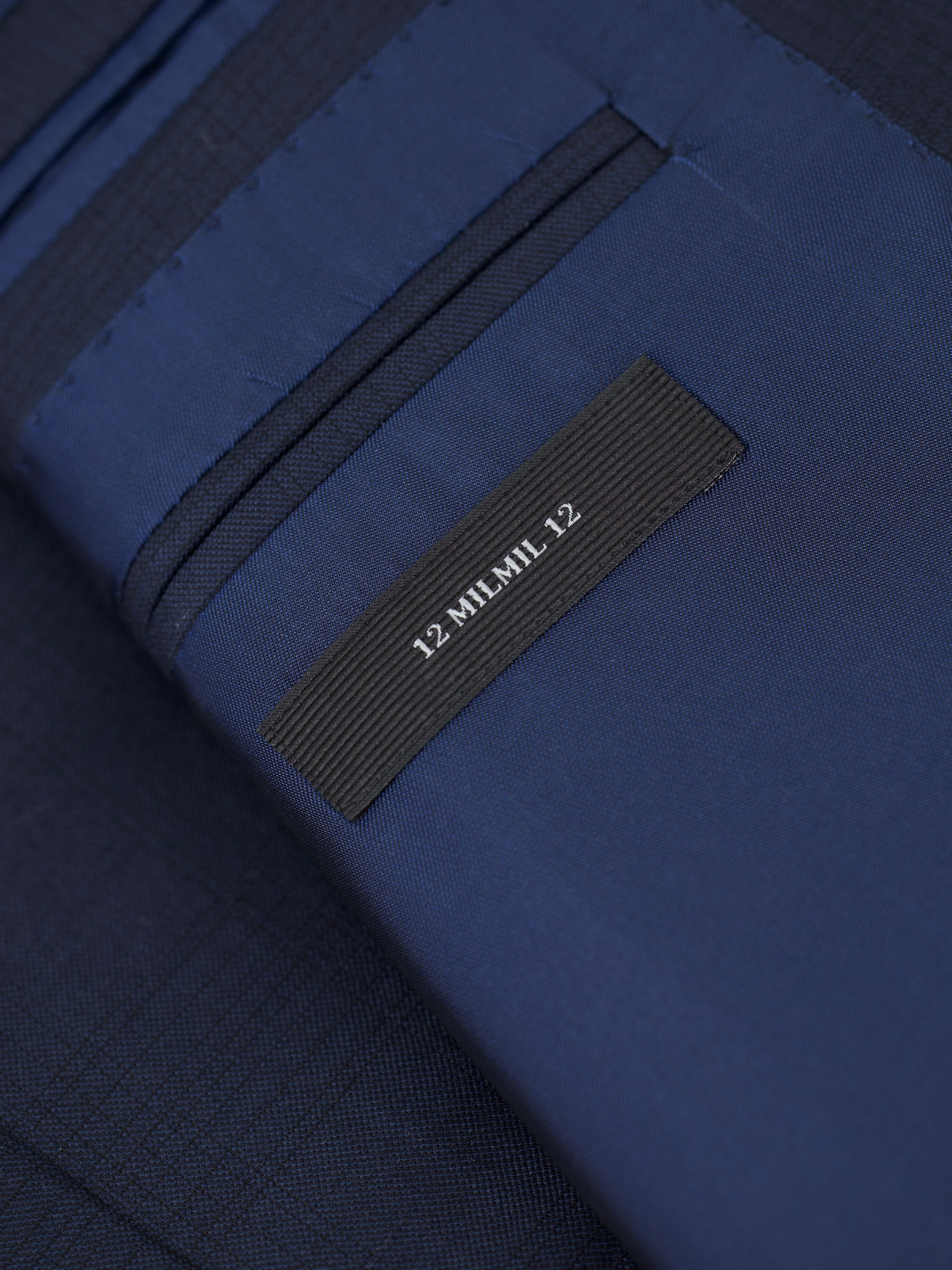


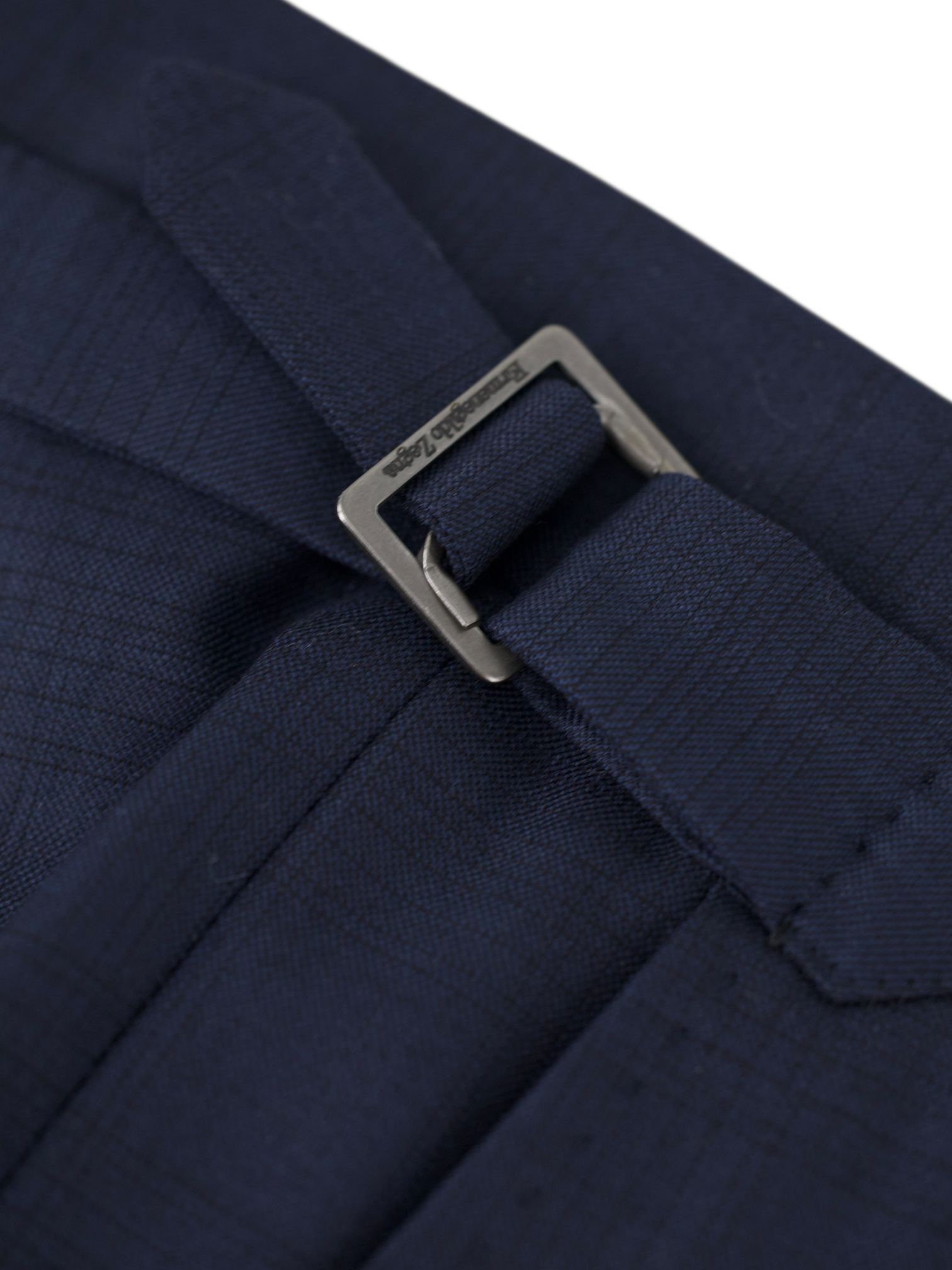
Ermenegildo Zegna Navy 12milmil12 Shadow-Check Milano Suit
52 IT / 42 US / Large
Discover the Ermenegildo Zegna navy 12milmil12 shadow-check Milano suit, a study in subtle luxury and refined precision. Crafted from Zegna’s coveted 12milmil12 fabric—a superfine wool woven from fibres measuring just 12 microns in diameter—it offers a rare balance of featherweight softness and impeccable structure. The navy base is enlivened by a delicate shadow-check pattern, barely perceptible at a glance but unmistakably present. With notch lapels, flap pockets, and a sharp, modern silhouette, this is tailoring designed for quiet impact. Side adjusters at the waist and turn-ups at the cuff add a nod to traditionalism, while preserving a clean, contemporary line.
12milmil12 is one of Zegna’s most exclusive cloths, reserved for its highest-tier tailoring. The name refers to the extraordinary fineness of the wool fibres—12 microns, compared to roughly 17–19 microns for standard suiting wool—sourced from a minute selection of Australian Merino flocks. The yarn is spun in-house at Lanificio Zegna, where specialist looms and slow weaving techniques are required to handle such delicate fibres. Due to the rarity and complexity of the process, Zegna produces only around 2,000 meters of 12milmil12 fabric each year—a fraction of its overall output. This scarcity, combined with its silken hand-feel and elegant drape, makes 12milmil12 a benchmark of modern luxury in menswear. Discover the elaborated sartorial details below.
Composition: 100% Zegna 12MilMil12 Wool
Color: Navy
Pattern: Ruit
See how we measure our sartorial items
Discover the customization possibilities by visiting our tailor alteration guide
Gratis verzending voor bestellingen boven de 200€ in Nederland, 500€ in de EU en 1000€ buiten de EU.
Verzendkosten voor bestellingen onder de minimumprijs zijn afhankelijk van je land.
General Note: While we inspect each item to ensure its quality, please note that minor imperfections may be present due to the preloved nature of the garments. We strive to represent every item accurately, but subtle signs of wear may sometimes go unnoticed. We appreciate your understanding and commitment to sustainable luxury.
Opties kiezen









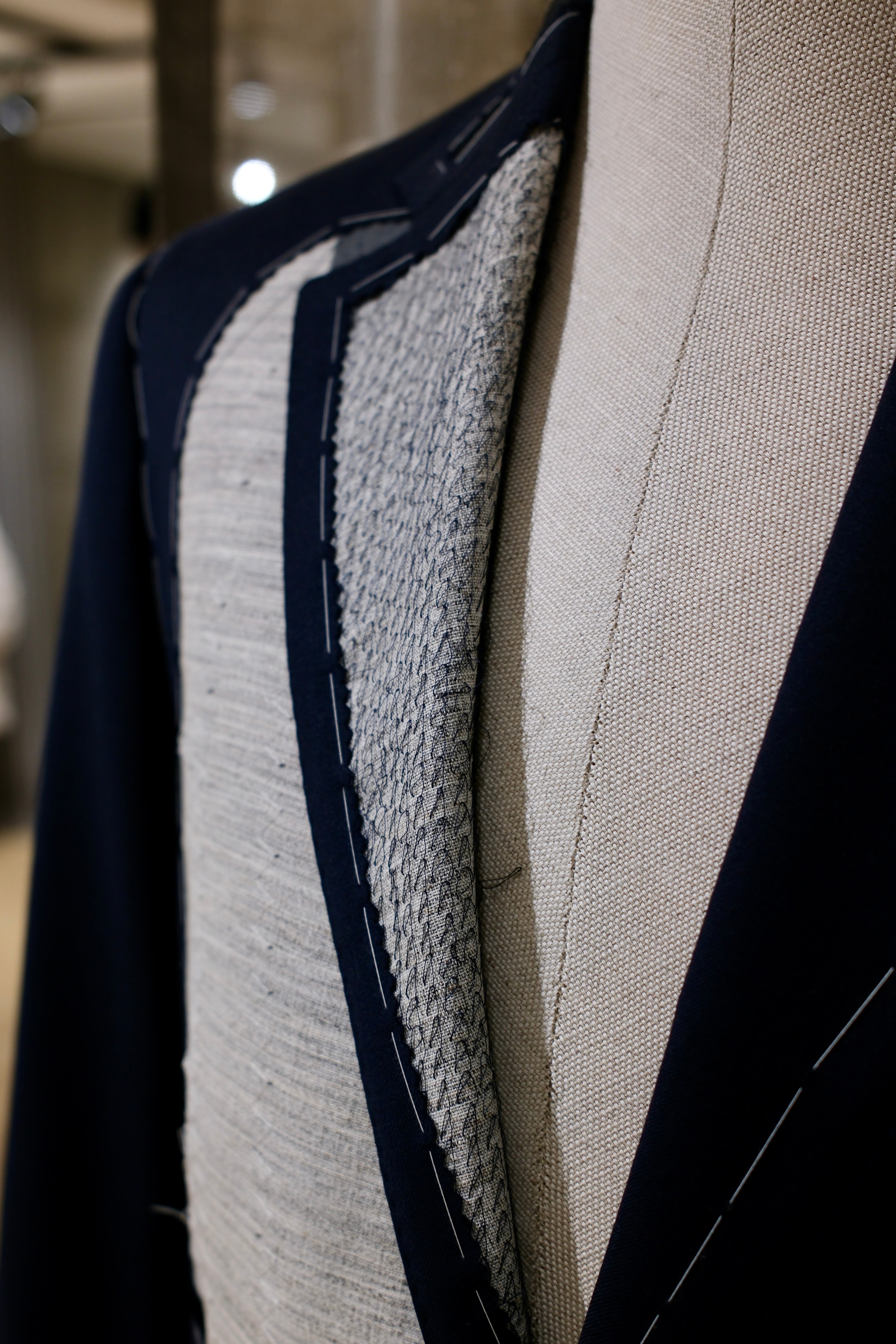
Ontdek de
Sartoriale Details

Full Canvas Constructie
Een sartoriale jas - of mantel - heeft een tussenvoering nodig die helpt om de vorm te geven en het te modelleren. Canvas geeft het item een op maat gemaakte en ambachtelijke uitstraling. Kortom, het brengt leven in het kledingstuk. Technisch gezien is canvas gemaakt van paardhaar, wol, mohair of kamelenhaar. Het kan ook een mix van deze materialen zijn, met variërende dikte en gewicht. De canvas wordt aan de jas gestikt, vaak met de hand, waardoor de canvasstukken 'zweven' tussen de binnen- en buitenstof. Dit geeft de jas extra flexibiliteit. De canvas loopt van de bovenste delen helemaal door tot het einde van de jas. Nadat je je canvasjas een tijd hebt gedragen, zal deze beginnen de vorm van je lichaam aan te nemen en er ongelooflijk natuurlijk uitzien.
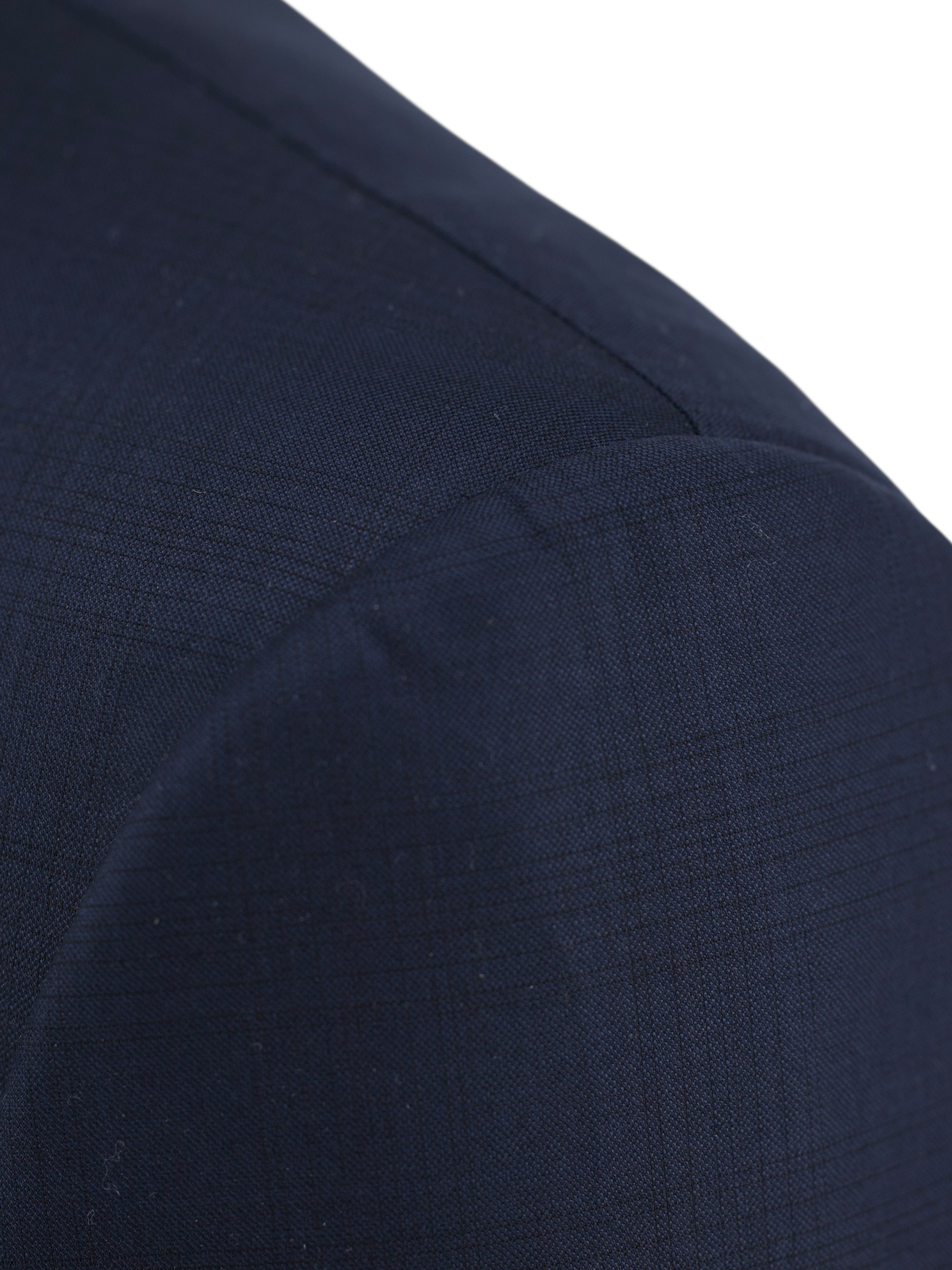
Gerolde Schouders
Een "gerolde" schouder - of mouwkop - beschrijft de verhoogde vorm of richel van de bevestiging van de mouw aan de schouder. Hoe hoger het is, hoe imposanter de schouderlijn lijkt. Dit kan vaak worden gevonden in iconisch Brits kleermakerswerk.
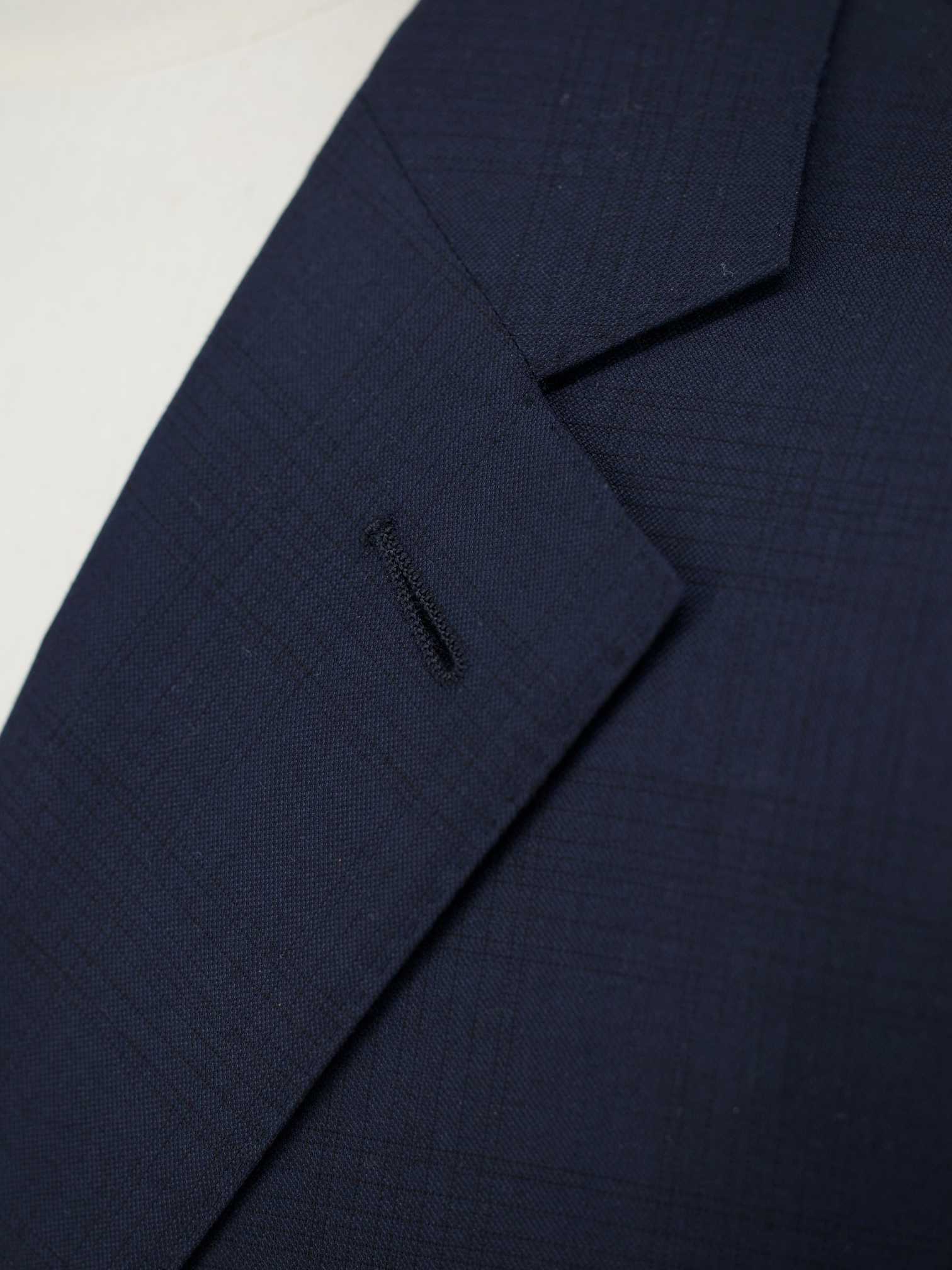
Handgemaakt Knoopsgat
Handgemaakte knoopsgaten worden gemaakt met behulp van een ketting van geknoopte lussen, genaamd festonsteken, die ze sterk en visueel onderscheidend maken. Het duurt ongeveer vijf seconden om met een machine een normaal knoopsgat te naaien - een enkel handgemaakt knoopsgat kost ongeveer 10 minuten om te naaien.
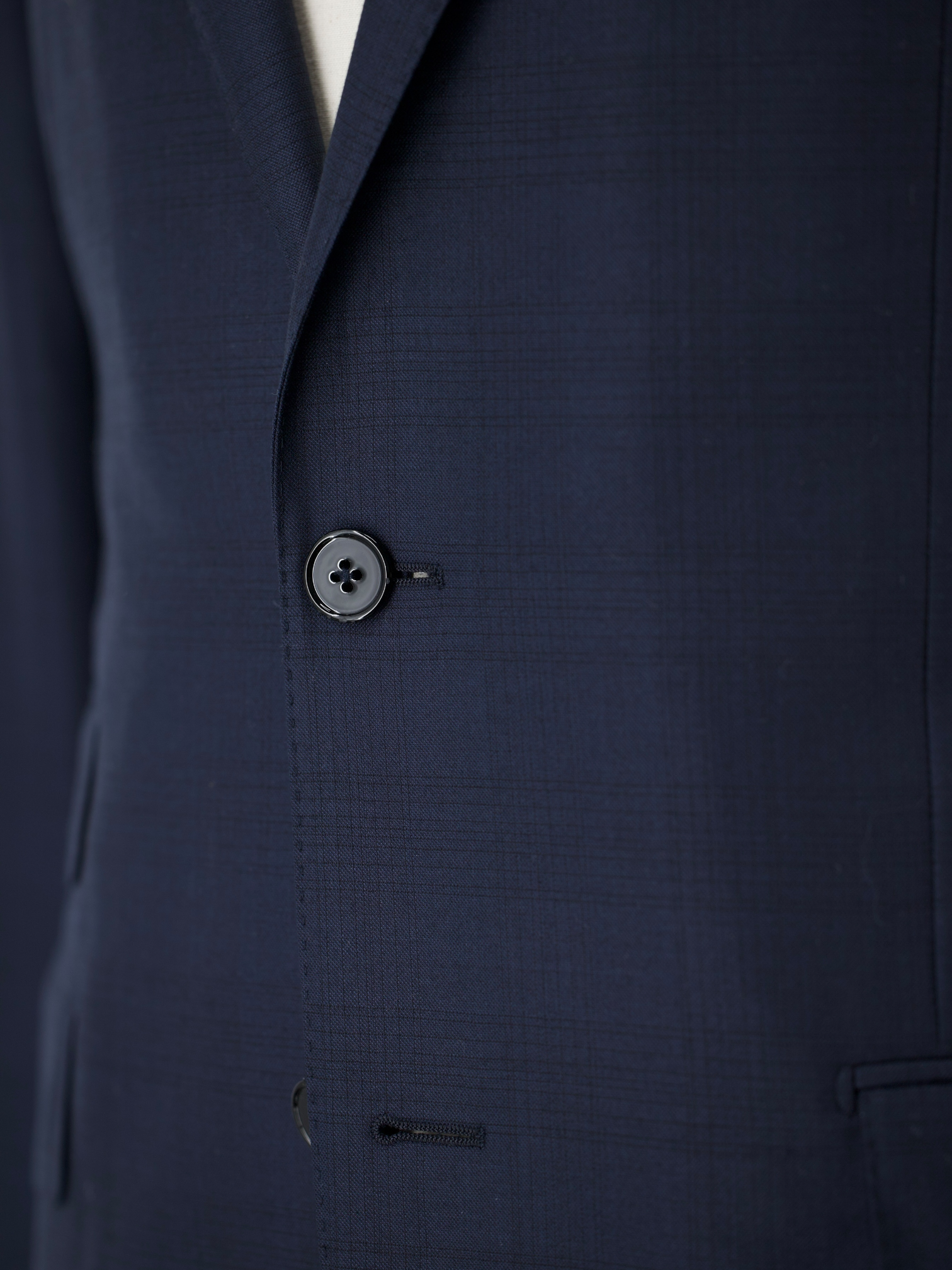
Tweeknoops Sluiting
Het jasje heeft een sluiting met twee knopen waardoor het profiel strak blijft.
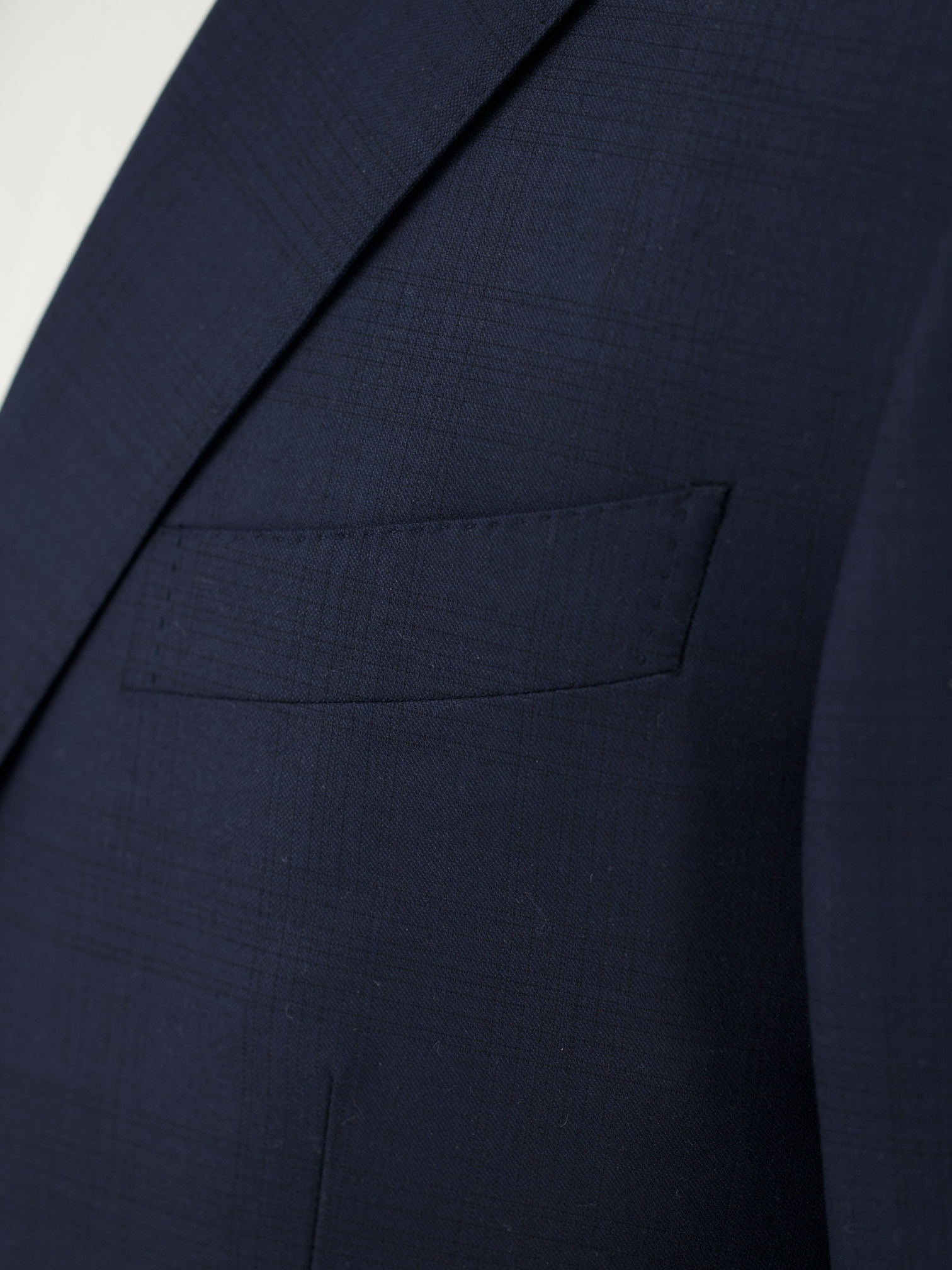
Borstzak - Afgeronde Paspelzak
Ook bekend als 'barchetta', Italiaans voor 'bootje', wordt het zo genoemd omdat deze zak zweeft op de borst, lichtjes schuin omhoog, net als de boeg van een zeilboot. Deze zakken echoën de levendige rol van een revers die de veerkracht van canvas en natuurlijke wol draagt, in tegenstelling tot machinaal gemaakte borstzakken die een meer platte, rechthoekige vorm hebben en minder leven.
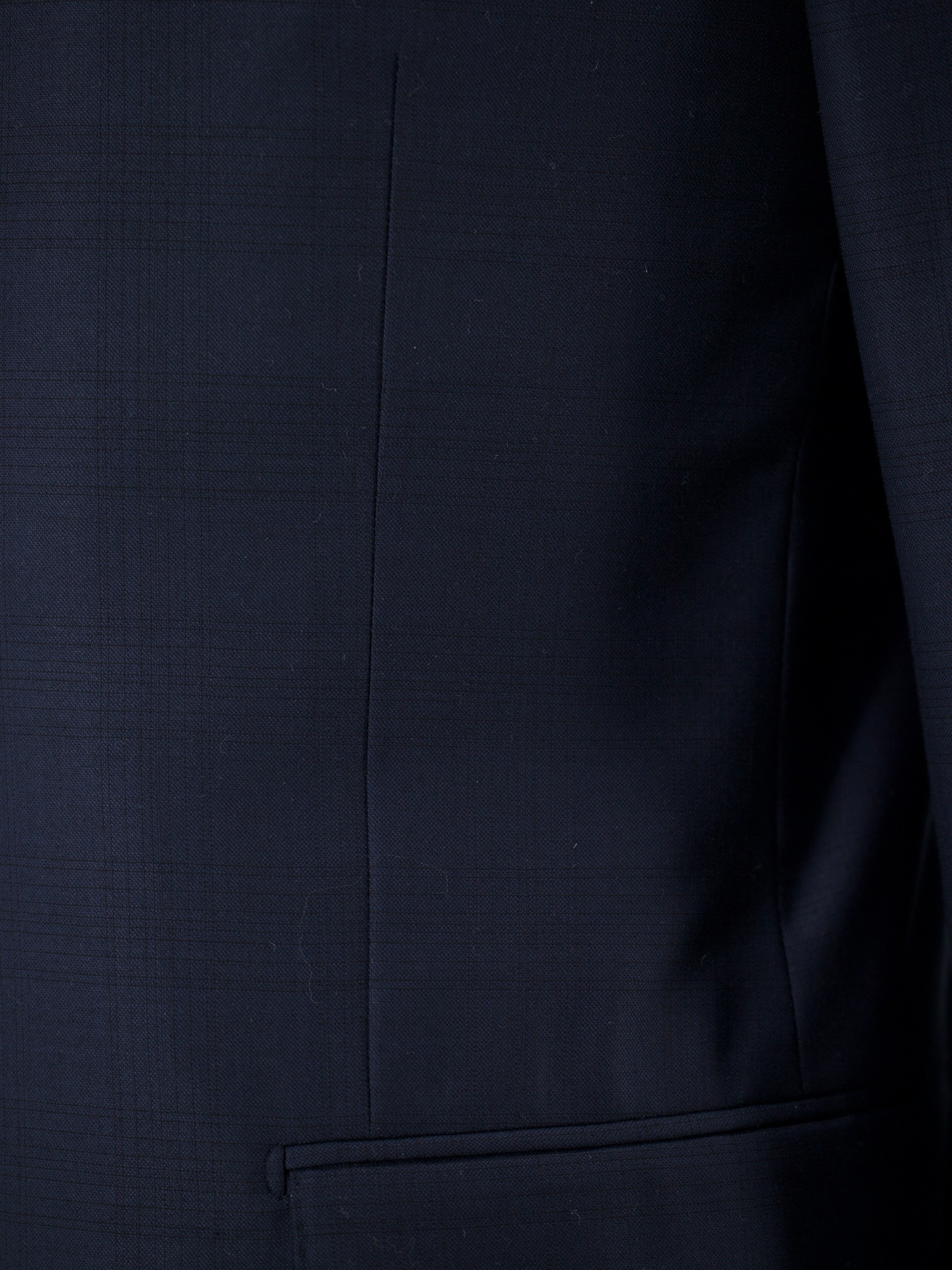
Naden
De kleermaker voegt twee figuurnaden toe - denk aan ze als ingeknepen naden - om ervoor te zorgen dat het lichaam van het jasje een slank silhouet krijgt. Het proces, genaamd "mezzo punto riprese", wordt volledig met de hand uitgevoerd.

Hoornen Knopen
Hoornen knopen worden gewaardeerd om hun kwaliteit. Ze zijn gemaakt van het beste echte hoornmateriaal, wat de uitstraling van het pak verbetert. En omdat ze zo sterk zijn, hoef je je geen zorgen te maken dat ze barsten of breken.
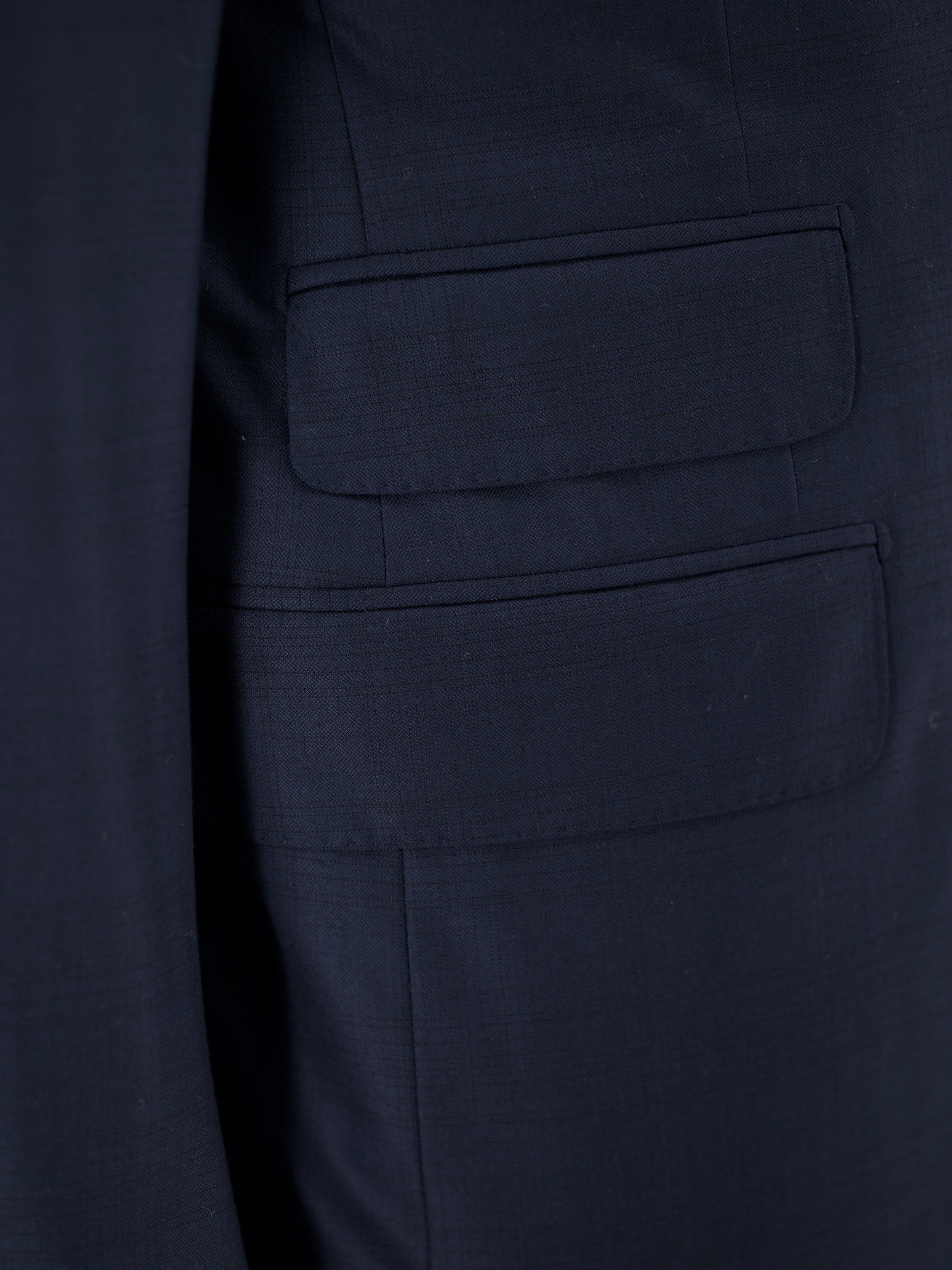
Klepzakken
Dit was oorspronkelijk bedoeld om te voorkomen dat vuil in de jaszakken terechtkomt wanneer deze op het platteland wordt gedragen. Klepzakken bevinden zich min of meer in het midden wat betreft formaliteit: ze zijn een voor de hand liggende keuze voor zakelijke pakken, maar ze kunnen ook voorkomen op blazers als eerbetoon aan hun informele oorsprong.
de details van
de broek

Flat Front
Flat-front trousers are a go-to for a modern, clean look. They became popular in the 1960s and 1970s when fashion started leaning towards simpler, more streamlined styles. Unlike pleated pants, flat fronts have no extra fabric at the waist, giving them a sleek appearance that's perfect for a slimmer silhouette. They fit right into both casual and business casual settings, making them incredibly versatile. As a result, they are a favorite for anyone looking to maintain a contemporary vibe in their wardrobe.

Side Adjusters
Side adjusters are a stylish alternative to belts, offering a clean look without the need for additional accessories. These adjusters are typically small buckles or tabs located on each side of the waistband, allowing you to tighten or loosen the trousers for a perfect fit. Popular in bespoke tailoring and high-end menswear, side adjusters provide a sleek and polished appearance. They are particularly favored in formal and semi-formal settings, as they maintain the silhouette of the trousers without the bulk of a belt.

Turn-Up (Cuffed) Hem
The turn-up hem, or cuffed hem, is a classic style where the fabric at the bottom of the trousers is folded outward to create a visible cuff. This style originated with Edward VII in the late 19th century, who had his trousers tailored with cuffs to prevent them from getting muddy, sparking a trend among the fashionable elite. In the 1920s and 1930s, turn-ups became a symbol of wealth and sophistication, as having extra fabric was seen as a luxury. This association continued after World War II when wearing turn-ups subtly indicated affluence in an era of fabric rationing. Today, turn-up hems are a nod to their historical roots, offering a touch of classic elegance and enhancing the overall appearance of formal and tailored trousers.

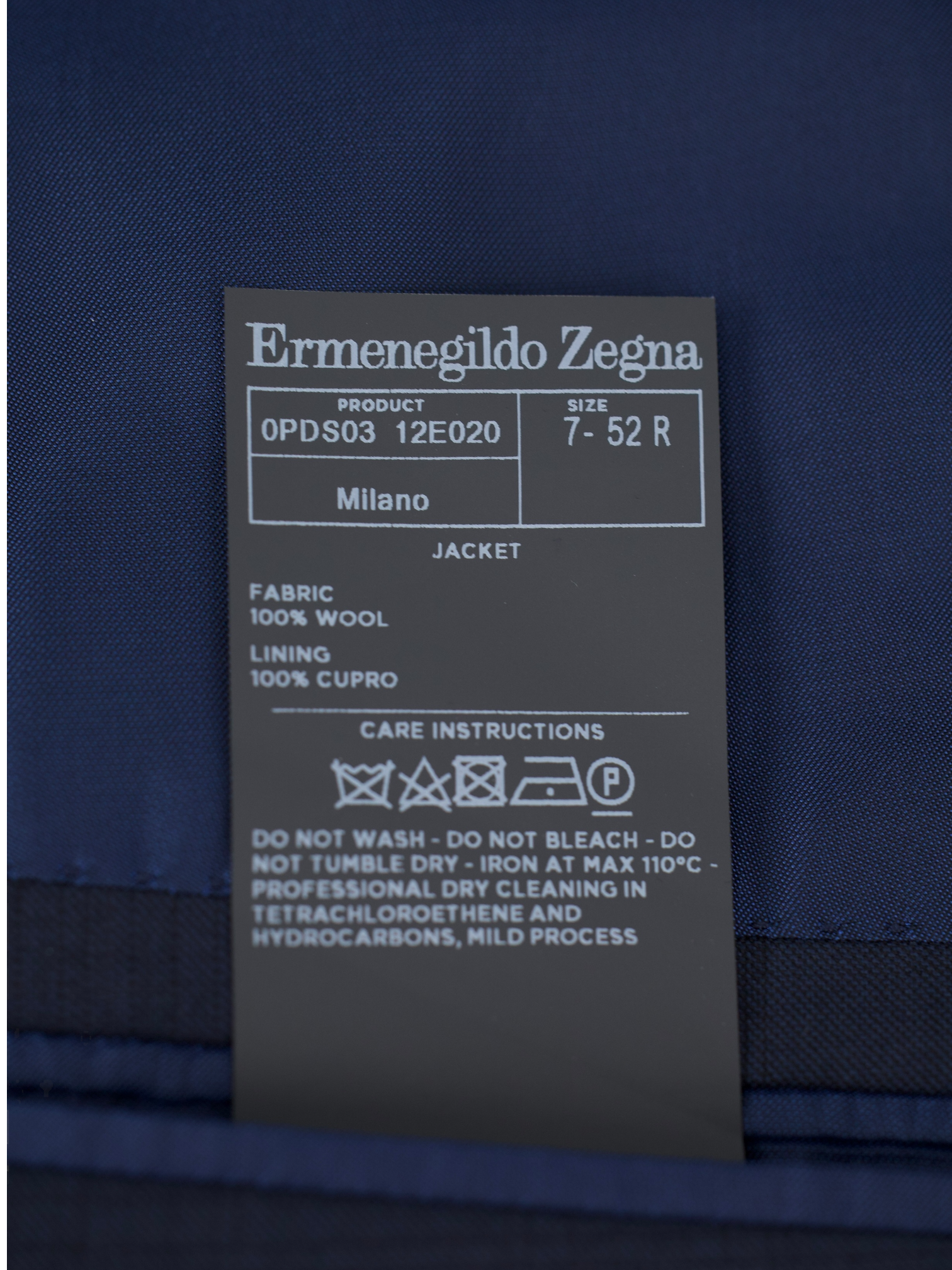
maat
52 IT / 42 US / Large


 Curator's Description
Curator's Description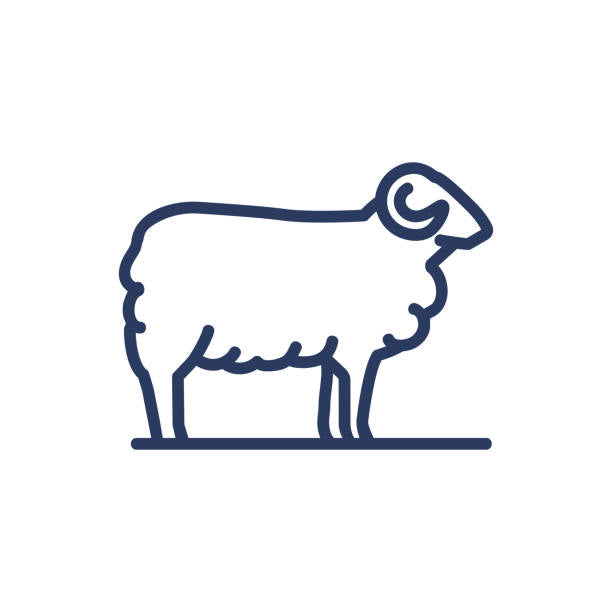 Materialen
Materialen